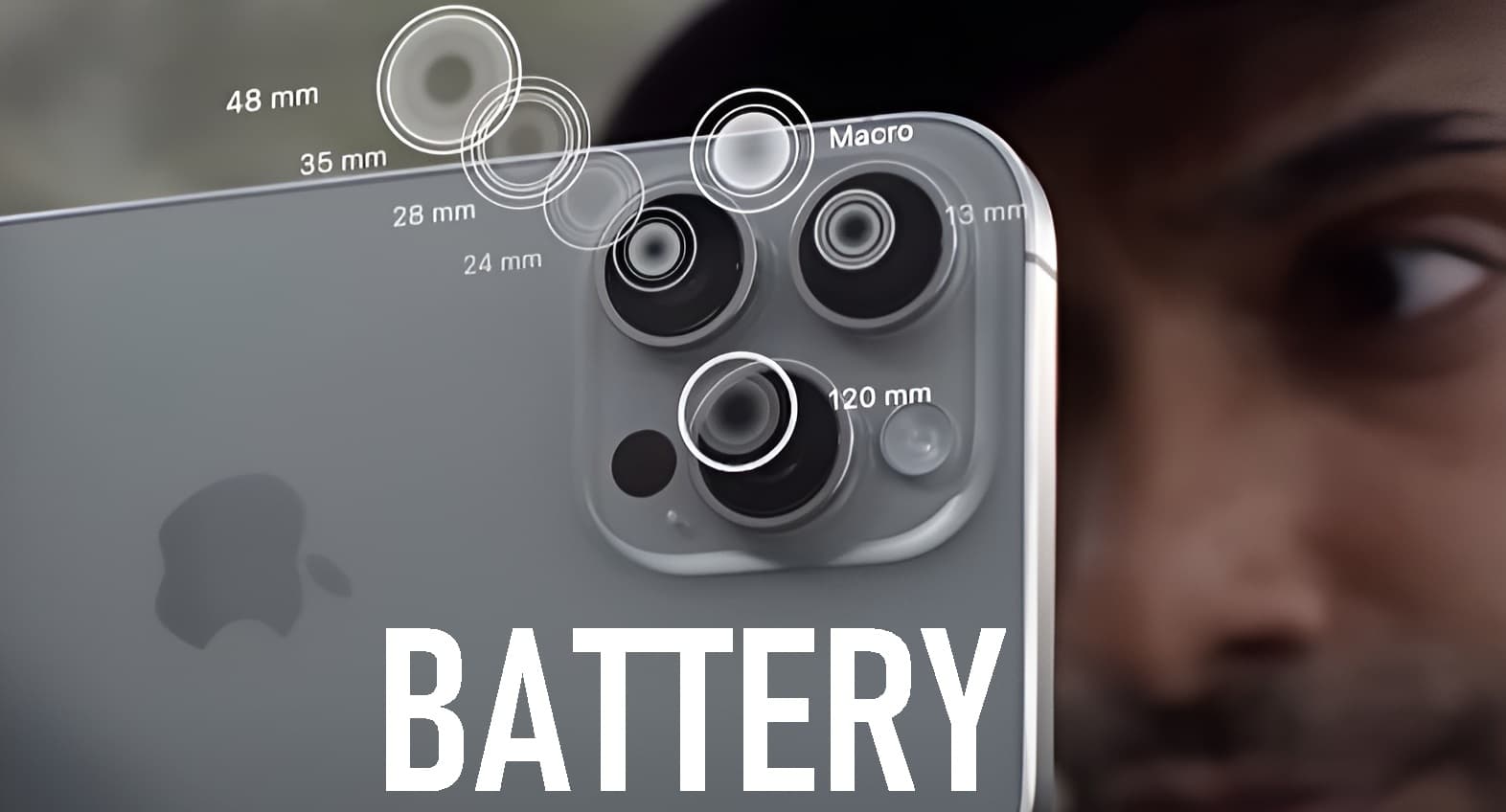
Buying a smartphone can be tricky. With so many options, it’s easy to end up with a phone that doesn’t meet your needs or, worse, one that’s overpriced. If you’re tired of wasting money on the wrong devices, this guide will help you make an informed decision and find the perfect smartphone that balances your requirements and budget.
Key Factors to Consider When Buying a Smartphone
Choosing the right phone isn’t just about picking the latest model or the most popular brand. You need to understand your needs and how different features impact performance, usability, and value. Here’s what you should focus on:
1. Understand Smartphone Processors: The Brain of Your Phone
The processor (or CPU) is like your phone’s brain. It determines how fast your apps run, how well games perform, and how smoothly your phone handles multitasking. Here are some quick tips:
- Avoid Samsung Exynos processors: They often lag behind their Snapdragon and MediaTek counterparts in performance and battery life.
- Oppo and Vivo processors: They tend to offer underwhelming performance compared to their prices.
- Choose Snapdragon for gaming: If you want smooth gameplay, Snapdragon processors generally provide better sustained performance than other brands.
- Peak vs. Sustained Performance: While peak performance looks impressive, sustained performance matters more. It tells you how well your phone will run under continuous load, like during long gaming sessions. Check for throttling tests to understand this.
Quick Tip:
To gauge a phone’s real-world performance, search online for benchmarks and throttling test results for the model you’re considering. Look for reviews that detail how the phone handles extended gaming or heavy multitasking.
2. Storage Matters More Than You Think
Storage speed plays a big role in how your phone performs. Faster storage means quicker app loading times, smoother multitasking, and a generally snappier user experience.
- UFS vs. eMMC: Always go for UFS (Universal Flash Storage). eMMC storage is slower and outdated; avoid phones with eMMC storage at all costs, especially for models priced above ₹15,000.
- UFS Types:
- UFS 2.1: Found in budget phones under ₹20,000.
- UFS 3.0: Aim for this in the ₹25,000-₹30,000 range.
- UFS 3.1: Usually starts at 256GB capacity and offers the best performance in mid to high-end phones.
Quick Tip:
When checking specs, search “[Phone Model] storage type” to see which UFS version it uses. The bigger the number, the faster the storage.
3. Network Performance: Avoid Bad Connectivity
Nobody likes dropped calls or slow internet, so choose wisely:
- Google Pixel Phones: Known for having weaker network performance and heating issues.
- Exynos Models: Watch out for inconsistent connectivity in some Samsung phones.
- 5G Support: With networks expanding, it’s best to choose a 5G phone for future-proofing. Even if 4G is still widespread, 5G compatibility ensures you won’t need an upgrade soon.
Quick Tip:
Most phones today support carrier aggregation, which boosts network speeds. It’s an essential feature, especially for data-heavy users.
4. Camera Quality: It’s Not Just About Megapixels
While high megapixel counts sound appealing, the actual image quality depends on sensor quality, image processing, and software optimization. Here’s how to choose:
- For Photos: If you only take a few pictures occasionally, most mid-range phones will work fine. But if you need sharp, vivid photos, consider camera-centric phones like the Google Pixel 6a or iPhones for better overall performance.
- For Videos: If video recording is a priority, go for phones with good stabilization features and high dynamic range. iPhones excel here, but there are also excellent Android options.
Quick Tip:
Use websites that compare the same shots taken from different phones to decide which camera’s color and detail you prefer.
5. Display: Go Beyond the Buzzwords
The display is your phone’s window to everything, so it’s crucial to get it right.
- AMOLED vs. LCD: AMOLED displays offer richer colors and better contrast. LCDs are more common in budget models and can look washed out in comparison.
- Resolution: 1080p is enough even for flagship models. Higher resolutions like 1440p drain more battery without much visible improvement on small screens.
- Brightness: A phone’s outdoor visibility depends on how bright its screen can get. Numbers on paper (like “1200 nits”) don’t always translate to real-world performance, so check in-store if you can.
Quick Tip:
Don’t pay extra for features like 10-bit color displays unless you’re really into content creation. The benefits aren’t easily noticeable on smaller screens.
6. Battery Life: What to Look For
Battery life varies greatly based on how you use your phone. Most modern smartphones should last a day with average usage, but if you’re a heavy user, pay attention to battery capacity and charging speeds.
- Charging Speed: 45W to 60W chargers are a sweet spot. Super-fast chargers can degrade battery health over time, so balance speed with longevity.
- Screen-On Time: This metric shows how long your phone’s screen remains active on a full charge. Remember, battery life also depends on your specific apps. For instance, gaming apps drain batteries faster than messaging or browsing.
Quick Tip:
Avoid charging your battery to 100% every time; aim for 80-90% to prolong its lifespan.
7. Software Experience: Choose Your UI Wisely
Each smartphone brand offers a unique user interface (UI), with its own strengths and weaknesses:
- Samsung One UI: Feature-rich but can feel cluttered. Updates are regular, and there are minimal ads.
- MIUI (Xiaomi): Tons of features but plagued with ads and bloatware, which can slow down performance over time.
- OxygenOS (OnePlus): Clean and smooth UI, though it’s become more like ColorOS lately. Good on updates.
- Realme UI and others: Expect bloatware, ads, and inconsistent updates.
Quick Tip:
Pick a UI based on your tolerance for ads and bloatware. If you prefer a clean experience, opt for brands that minimize unnecessary software.
8. Where to Buy: Online vs. Offline
Should you buy online or visit a store? Both have their pros and cons:
- Online: Generally offers better deals, but you can’t physically check the phone before buying.
- Offline: Lets you feel the phone, test the display, and check speaker quality before purchasing. Sometimes, stores will match online prices if you ask.
Quick Tip:
Visit a store first to test the phone’s feel and display. Then compare prices online to get the best deal.
9. After-Sales Service: The Hidden Factor
No matter how good your phone is, it’s only as reliable as its after-sales support. Service experiences can vary widely even within the same brand, depending on your location.
- Check Availability: Make sure there’s a service center nearby for the brand you choose.
- Be Ready for Uncertainty: Service experiences can be hit or miss, so be prepared to visit more than one service center if needed.
Quick Tip:
Research service center reviews online and be aware that your experience may differ.
Final Thoughts: Choose Smartly to Save Money and Frustration
Buying a smartphone doesn’t have to be stressful. By understanding what matters—processor performance, storage type, network capabilities, display quality, and software experience—you can avoid wasting money and get a phone that truly fits your needs. Keep these tips in mind, do a little research, and you’ll find a phone that delivers great performance without breaking the bank.
Smartphone Storage, Display, and Camera Guide: How to Choose the Best Features for Performance and Experience

Buying a smartphone is more than just picking a brand or checking the latest model. To get the best value and performance, you need to understand the different features, especially storage, display, and camera quality. This guide will break down these essential elements, helping you make a smart decision and avoid common pitfalls.
1. Understanding Smartphone Storage: Why It Matters
Storage isn’t just about how many photos or apps you can keep on your phone. The type of storage your phone uses has a big impact on speed, app loading times, and overall performance. Here’s what you need to know:
UFS vs. eMMC Storage: Which One to Avoid?
- UFS (Universal Flash Storage): Faster and more efficient, it’s the best choice for modern smartphones. UFS comes in different versions like 2.1, 3.0, and 3.1, with higher numbers indicating better performance.
- eMMC (Embedded MultiMediaCard): Outdated and slow. Avoid phones with eMMC storage, especially if you’re paying more than ₹15,000. It’s usually found in budget devices but seriously hampers performance.
UFS 2.1 vs. UFS 3.0: What’s the Difference?
- UFS 2.1: Common in mid-range phones. Offers decent speed but struggles with high-performance tasks like gaming or 4K video recording.
- UFS 3.0 and 3.1: Faster read and write speeds, making your phone snappier and more responsive. UFS 3.1 is particularly great for gaming phones, as it reduces load times and improves multitasking.
How Storage Type Affects Phone Performance
The type of storage impacts how quickly your apps open, how fast your phone boots up, and how smoothly it handles large files. UFS storage, especially UFS 3.0 and above, ensures you won’t be waiting around for your phone to catch up with you.
How to Check Your Phone’s Storage Type
To check the storage type on your phone, go to your device’s specifications page on the manufacturer’s website or use apps like AIDA64, which can show detailed hardware information, including storage type.
Best Smartphones with Expandable Storage
If you’re someone who takes lots of photos or videos, expandable storage can be a lifesaver. Phones like the Samsung Galaxy A series and some Xiaomi models offer microSD card slots, allowing you to easily increase your storage capacity without upgrading your entire phone.
Quick Tip:
When buying a phone, aim for at least UFS 3.0 storage to ensure good performance, especially if you play games or use heavy apps regularly.
2. Smartphone Displays: What to Look For in a Screen
Your phone’s display affects everything from video watching to browsing, gaming, and reading. Here’s how to choose the best one:
AMOLED vs. LCD: Which is Better?
- AMOLED (Active Matrix Organic Light-Emitting Diode): Offers deeper blacks, richer colors, and better contrast. It’s perfect for watching videos, reading in the dark, and saving battery life on darker themes.
- LCD (Liquid Crystal Display): Generally found in budget phones, LCDs can look washed out compared to AMOLED screens but are more affordable.
How AMOLED Displays Improve Battery Life
AMOLED displays light up individual pixels, so when part of the screen is black, those pixels turn off entirely, saving battery. This isn’t the case with LCDs, which always light the whole screen.
Best Phones with 1080p AMOLED Displays
For great visuals without breaking the bank, look for phones with 1080p AMOLED displays, like the Samsung Galaxy A54 or the OnePlus Nord series. These phones offer crisp visuals and smooth scrolling.
Benefits of 120Hz Displays in Smartphones
High refresh rates like 120Hz make scrolling and animations look buttery smooth. If you spend a lot of time gaming or just love a fluid user experience, a 120Hz display can be worth the extra cost.
Importance of Brightness Nits in Smartphone Displays
Brightness, measured in nits, affects how easily you can see your screen outdoors. For outdoor visibility, look for phones with at least 500 nits of brightness. Higher-end models can reach 1,000 nits or more, making them great for sunny days.
How to Choose a Smartphone Display for Outdoor Visibility
When picking a phone for outdoor use, focus on AMOLED displays with high brightness levels. You’ll be able to see your screen clearly even in bright sunlight.
Quick Tip:
If you watch a lot of content or spend time outdoors, prioritize a high-brightness AMOLED display. It will make your experience more enjoyable.
3. Smartphone Audio Quality: How to Pick a Phone with Great Sound
Sound quality might not be the first thing on your mind when buying a phone, but it’s important if you listen to music, watch videos, or take a lot of calls. Here’s what to consider:
Best Smartphones with Dual Speakers
Phones with dual speakers, like the iPhone 14 or Samsung Galaxy S23, provide a more immersive audio experience. They offer better sound for movies, music, and gaming compared to phones with just one bottom-firing speaker.
How to Test Speaker Quality in Smartphones
Testing in-store is the best way to judge speaker quality. Play your favorite song or video and listen for clarity, volume, and bass response. Make sure the sound doesn’t distort at higher volumes.
Smartphones with Best Audio Quality for Media Consumption
If audio quality is a top priority, look for phones from brands like Sony, Samsung, and Apple. These companies tend to focus more on audio performance, making them ideal for watching movies and listening to music.
Quick Tip:
Check reviews that specifically test speaker performance. Sound quality can vary widely, even among high-end phones.
4. Camera Quality: Finding the Best Camera Phone for You
Cameras are one of the biggest deciding factors when choosing a smartphone. But more megapixels don’t always mean better photos. Here’s how to pick the best camera for your needs:
Smartphone Photography Tips for Beginners
Start by understanding your camera’s basic settings. Learn how to adjust exposure, focus, and use modes like Portrait and Night Mode to get the most out of your smartphone camera.
Megapixels vs. Image Quality: What Matters More?
Higher megapixels can capture more detail, but sensor size, lens quality, and image processing are what really determine image quality. A 12MP camera with a good sensor can outperform a 64MP camera with a poor one.
Understanding Smartphone Camera Sensors
The camera sensor size impacts how much light your phone can capture. Larger sensors, like those found in flagship models, perform better in low light and produce sharper images.
Smartphones with Best Night Mode Photography
If you love taking photos in low light, look for phones with good Night Mode features. The Google Pixel series and iPhone models excel in this area, producing bright, detailed shots even in dark conditions.
The Importance of Image Stabilization in Smartphones
Image stabilization helps reduce blurriness in photos and videos, especially in low light or when recording on the move. Optical Image Stabilization (OIS) is the best, but even digital stabilization can make a difference.
Best Budget Smartphones with Good Cameras
Great cameras aren’t limited to expensive phones. Models like the Google Pixel 6a or the Xiaomi Redmi Note series offer impressive camera performance at a fraction of the price of high-end models.
How to Improve Smartphone Camera Quality
- Use third-party apps: Apps like GCam (Google Camera) often provide better image processing than the stock camera app.
- Keep your lens clean: Smudges and dust can degrade photo quality significantly.
- Experiment with settings: Adjust settings manually to get the best possible shot.
Quick Tip:
When choosing a camera-centric phone, look for reviews that include real-world photo samples. Comparing images side-by-side will help you pick the camera that suits your style best.
Final Thoughts: Choose Smartly for the Best Performance and Experience
When buying a smartphone, storage, display, and camera quality play huge roles in your overall experience. By understanding how these elements affect performance and usability, you can make a more informed choice and get a device that truly fits your needs. Take time to research, test in stores when possible, and look for reviews that provide in-depth analysis of the features that matter most to you.
The Ultimate Smartphone Guide: Battery Life, Security, and Shopping Tips for 2024

Choosing a smartphone is more than just picking the latest model. It’s about understanding features that matter most, like battery life, security, and the best places to buy. In this guide, we’ll cover everything you need to know to make a smart decision and get the most out of your new phone.
1. Battery Life and Charging: Maximizing Your Phone’s Power
Battery life can make or break your smartphone experience. Whether you’re a heavy user or just want your phone to last through the day, here’s what to look for:
Smartphones with Best Battery Life for Heavy Users
For heavy users who stream videos, play games, and use multiple apps simultaneously, battery life is crucial. Phones like the Asus ROG Phone 7 and Samsung Galaxy M34 come with large batteries (over 5,000mAh) that last through intense use. They also feature power-efficient processors and screens that help conserve energy.
How to Choose a Fast Charging Smartphone
Fast charging is a game-changer for busy lifestyles. Look for smartphones that support at least 25W charging. For even quicker power-ups, options like the OnePlus 11T with 100W fast charging or the Xiaomi 13 Pro with 120W charging can recharge your phone from 0% to 100% in under 30 minutes.
Wireless Charging: Is It Worth It?
Wireless charging is convenient and helps avoid wear and tear on charging ports. However, it’s typically slower than wired charging. If you don’t mind a slower charge and want a cleaner, cable-free setup, wireless charging is a nice feature to have. Phones like the iPhone 14 Pro and Samsung Galaxy S23 offer reliable wireless charging capabilities.
Why You Shouldn’t Charge Your Phone to 100%
Keeping your phone’s battery at 100% can strain the battery and reduce its lifespan. It’s better to keep it between 20% and 80% for optimal battery health. Most modern phones have built-in battery management features to help with this, so you don’t have to worry too much.
Best Smartphones with 60W Fast Charging
If you want a balance between speed and battery health, phones with 60W fast charging, like the Realme GT 2 Pro, offer rapid charging times while being gentle on the battery. These phones typically recharge to 100% in about 40 minutes.
How to Test Battery Performance on Smartphones
To assess battery performance, check reviews and user feedback focusing on real-world usage. Look for battery endurance ratings in tests and try the phone’s battery in person if possible. Apps like AccuBattery can also provide detailed insights into battery health and performance.
Tips for Prolonging Your Smartphone Battery Life
- Enable Battery Saver Mode: Most phones have a battery saver feature that limits background activity and reduces performance to extend battery life.
- Reduce Screen Brightness: Lower brightness settings or use adaptive brightness to save power.
- Disable Unnecessary Features: Turn off Wi-Fi, Bluetooth, and location services when not in use.
- Manage Apps: Uninstall or disable apps that you don’t use often as they can drain the battery.
Fast Charging vs. Slow Charging: Pros and Cons
- Fast Charging: Pros include quick power-ups and convenience. Cons can be potential long-term battery wear if used excessively.
- Slow Charging: Pros include gentle battery care and potentially longer battery lifespan. Cons are longer wait times to recharge your phone.
2. Security and Software Updates: Keeping Your Phone Safe
Smartphone security and timely software updates are vital to protect your personal data and ensure your phone runs smoothly. Here’s what to consider:
How Secure is Your Smartphone?
Security varies by phone brand and model. Look for phones with strong security features like fingerprint scanners, facial recognition, and encryption. Brands like Apple and Samsung offer robust security measures and frequent updates to protect your data.
Smartphones with Best Privacy Features
Phones like the Google Pixel 7 and Samsung Galaxy S23 come with advanced privacy features, including app permissions, secure folders, and regular security updates to safeguard your information.
How to Keep Your Phone Safe from Malware
To avoid malware:
- Install Apps from Trusted Sources: Only download apps from official stores like Google Play Store or Apple App Store.
- Update Regularly: Keep your phone’s operating system and apps up-to-date to protect against vulnerabilities.
- Use Security Apps: Consider installing a reputable antivirus app for additional protection.
Which Smartphone Brands Offer the Best Updates?
Brands like Apple and Google are known for their prompt and regular updates. Apple typically provides iOS updates for older devices for several years, while Google’s Pixel phones receive timely Android updates and security patches.
How to Check for Software Updates on Your Phone
To check for updates:
- iPhone: Go to Settings > General > Software Update.
- Android: Go to Settings > System > Advanced > System Update or check for updates under the Software Update menu.
Understanding Hardware-Based Security in Smartphones
Hardware-based security features include secure chips and dedicated processors that handle encryption and protect sensitive data. Phones with hardware-based security, like the Samsung Galaxy S23 with its Knox security suite, offer enhanced protection against physical and digital threats.
Best Smartphones for Software Reliability
Phones known for reliable software include the iPhone 14, Google Pixel 7, and Samsung Galaxy S23. These models offer consistent performance, timely updates, and excellent support for both security and software.
Importance of Regular Software Updates
Regular updates fix bugs, patch security vulnerabilities, and introduce new features. Keeping your phone updated ensures it remains secure and performs optimally over time.
Brands with the Most Frequent Security Patches
Google, Samsung, and Apple are leaders in providing frequent security patches. They ensure that your device receives timely updates to protect against the latest threats.
How to Secure Your Phone from Cyber Attacks
- Enable Two-Factor Authentication (2FA): Adds an extra layer of security to your accounts.
- Use Strong, Unique Passwords: Avoid using the same password for multiple accounts.
- Be Cautious with Public Wi-Fi: Use a VPN to protect your data when connected to unsecured networks.
3. Online vs. Offline Smartphone Shopping: Making the Right Choice
Deciding whether to buy your phone online or in a store can impact your experience. Here’s a breakdown of the pros and cons:
Pros and Cons of Buying Phones Online
- Pros:
- Convenience: Shop from anywhere at any time.
- Variety: Access to a wider range of models and brands.
- Reviews: Easily compare customer reviews and ratings.
- Cons:
- No Hands-On Experience: You can’t physically test the phone before buying.
- Return Hassles: Returning or exchanging a phone can be more complicated online.
- Potential for Scams: Risk of receiving a counterfeit or damaged product.
Why You Should Always Test a Phone In-Store
Testing a phone in-store lets you feel its build quality, screen, and user interface firsthand. You can also evaluate how it fits in your hand and whether it meets your expectations before committing to a purchase.
How to Get the Best Price on Smartphones
- Compare Prices: Check different retailers and online platforms for the best deals.
- Look for Sales and Promotions: Take advantage of seasonal sales, holiday discounts, and bundle offers.
- Consider Refurbished Models: Buying refurbished phones can save you money while still offering good quality.
Online vs. Offline Smartphone Warranty Claims
- Online Purchases: Warranty claims may involve shipping the phone back and dealing with online customer service.
- In-Store Purchases: Easier access to local support and quicker resolution for warranty issues.
Tips for Negotiating Prices at Offline Stores
- Know the Market: Research prices online and use this information to negotiate.
- Ask for Discounts: Retailers often have room for negotiation, especially on older models or during promotions.
- Inquire About Bundles: Sometimes, you can get a better deal by bundling accessories with your phone purchase.
How to Avoid Fake Phones When Shopping Online
- Buy from Reputable Sellers: Stick to well-known retailers or official brand stores.
- Check Reviews: Read reviews and seller ratings before making a purchase.
- Verify the Product: Look for signs of authenticity and compare the phone’s serial number with the manufacturer’s database.
Best Times of Year to Buy a Smartphone
- New Model Releases: Buying just before or after a new model is released can offer discounts on previous models.
- Holiday Sales: Look out for Black Friday, Cyber Monday, and other holiday promotions for deals.
Understanding Smartphone Return Policies
Before buying, make sure you understand the return policy:
- Time Frame: Check how long you have to return or exchange the phone.
- Condition: Ensure the phone must be in its original condition and packaging.
- Fees: Be aware of any restocking fees or shipping charges.
Why You Should Check a Phone’s Design In-Person
The design affects how comfortable the phone feels in your hand, its weight, and its usability. Testing the phone in
person helps you evaluate whether it meets your preferences for design and ergonomics.
How to Compare Online Smartphone Reviews with In-Store Experience
Online reviews provide valuable insights into performance and user experiences. However, in-store testing helps you assess the phone’s physical attributes and how it feels in your hand. Combining both approaches ensures you make a well-rounded decision.
Final Thoughts: Making an Informed Smartphone Purchase
Selecting the right smartphone involves balancing battery life, security, and shopping strategies. By understanding these factors, you can make an informed choice that fits your needs and ensures you get the best value for your money. Take your time to research, test, and compare to find a phone that truly meets your expectations.
Navigating Smartphone UIs and Budget-Friendly Options: A Comprehensive Guide for 2024

Choosing a smartphone involves more than picking the latest model; it’s also about understanding the user interface (UI) and finding budget-friendly options that meet your needs. This guide will walk you through the best UIs for performance, how to optimize your phone, and affordable smartphones that deliver great value.
1. Smartphone UI Comparisons: Finding the Perfect Interface
A smartphone’s user interface (UI) is crucial because it affects how you interact with your device daily. Let’s dive into the main UIs you’ll encounter and what makes them unique.
One UI vs. Stock Android: Which is Better?
One UI is Samsung’s custom UI based on Android, offering features like customizable themes, enhanced multitasking, and improved one-handed use. It’s known for its rich feature set and smooth integration with Samsung hardware. Stock Android, on the other hand, is the pure version of Android, as seen on Google Pixel phones. It provides a clean, bloatware-free experience with timely updates directly from Google.
Which is better? If you prefer a feature-rich experience and own a Samsung device, One UI might be more appealing. If you value simplicity and quick updates, Stock Android is a great choice.
Comparing MIUI, ColorOS, and Realme UI
- MIUI (Xiaomi): Known for its customization options, MIUI allows deep personalization and has a vibrant look. It includes features like a customizable control center and extensive theming options.
- ColorOS (Oppo): ColorOS focuses on smooth performance and includes unique features like gesture navigation and an enhanced dark mode. It’s designed for an intuitive user experience.
- Realme UI (Realme): Based on ColorOS, Realme UI offers a streamlined experience with features like a simplified home screen and easy-to-use gesture controls.
Which UI is best? It depends on your preference for design and features. MIUI is great for customization, ColorOS for smooth performance, and Realme UI for a simplified experience.
Best Smartphone UIs for Performance
For the best performance, consider UIs that are lightweight and optimized for speed. Stock Android offers excellent performance with minimal bloatware. One UI is also well-optimized for Samsung devices, balancing features with efficiency.
Understanding Bloatware in Different UIs
Bloatware refers to pre-installed apps that you might not need. Stock Android typically has minimal bloatware, while custom UIs like MIUI and ColorOS may come with additional apps and features that can be useful or removable depending on your preferences.
How Smartphone UIs Affect Performance
A well-designed UI can enhance performance by managing resources efficiently. Stock Android usually offers the smoothest performance due to its minimalistic approach. Custom UIs, like One UI, can also perform well but may have a slight impact on speed due to additional features.
Which Smartphone UI Offers the Best Features?
One UI and MIUI are notable for their feature sets. One UI provides a suite of Samsung-specific features, while MIUI offers extensive customization. Realme UI is designed to be straightforward, focusing on ease of use.
Brands with the Least Bloatware
Google and Nokia are known for offering phones with minimal bloatware. Their UIs are clean, providing a more streamlined experience.
How to Optimize Your Smartphone’s UI
To optimize your UI:
- Remove Unnecessary Apps: Uninstall or disable apps you don’t use.
- Update Regularly: Keep your UI updated for performance improvements.
- Customize Settings: Adjust settings for a more personalized experience.
Pros and Cons of Popular Smartphone UIs
- Stock Android:
- Pros: Clean, fast, frequent updates.
- Cons: Limited customization options.
- One UI:
- Pros: Feature-rich, good for Samsung users.
- Cons: More bloatware, potentially slower updates.
- MIUI:
- Pros: Highly customizable, feature-packed.
- Cons: Bloatware, occasional performance issues.
Best UIs for Long-Term Software Updates
Stock Android and Google Pixel phones generally receive timely updates directly from Google. Samsung’s One UI is also good for updates, though not as quick as Stock Android.
2. Budget-Friendly Smartphone Recommendations: Get More for Less
Finding a great phone on a budget doesn’t mean sacrificing quality. Here are some top picks and tips for budget-friendly smartphones.
Best Budget Smartphones Under $200
- Moto G Power (2024): Offers a large battery, decent performance, and a clean Android experience.
- Samsung Galaxy A14: Provides a good balance of features, performance, and a bright display.
Best Phones for Students on a Budget
- Samsung Galaxy A23: Great for students needing a reliable phone with decent performance and a good camera.
- OnePlus Nord N200: Offers 5G connectivity and solid performance at a budget-friendly price.
Budget Smartphones with Great Battery Life
- Redmi Note 12: Known for its impressive battery life and strong performance for the price.
- Samsung Galaxy M34: Provides excellent battery life and is well-suited for heavy users.
Best Value-for-Money Phones in 2024
- Google Pixel 6a: Delivers premium features like a high-quality camera and smooth performance at a lower price.
- Realme 11: Offers good performance, a high-refresh-rate display, and fast charging.
Affordable Phones with High-End Features
- Poco X5 Pro: Features a high-refresh-rate display, good performance, and fast charging, all at an affordable price.
- Samsung Galaxy A54: Provides a good mix of features including a high-quality screen and solid performance.
Budget Phones with Good Gaming Performance
- Redmi Note 12 Pro: Equipped with a capable processor and a high-refresh-rate screen, making it suitable for casual gaming.
- Poco X4 Pro: Offers good gaming performance with its Snapdragon processor and high-refresh-rate display.
How to Choose the Best Cheap Smartphone
- Assess Your Needs: Determine what features matter most to you, such as camera quality, battery life, or performance.
- Read Reviews: Check user reviews and expert opinions to ensure the phone meets your expectations.
- Compare Models: Look at different models and their specs to find the best value for your money.
Best Smartphones with Premium Features Under $300
- Samsung Galaxy A34: Features a vibrant display, good performance, and a versatile camera system.
- Realme GT Master Edition: Provides high-end performance and design features at an affordable price.
Best Mid-Range Smartphones for Performance
- OnePlus Nord 2T: Offers excellent performance and a smooth user experience.
- Google Pixel 6a: Known for its high performance and regular updates.
How to Save Money on Your Next Smartphone Purchase
- Look for Deals and Discounts: Keep an eye out for promotions and sales, especially during holiday seasons.
- Buy Older Models: Consider purchasing last year’s models, which often come with significant discounts.
- Explore Refurbished Options: Certified refurbished phones can offer great value with a lower price tag.
Final Thoughts: Making Smart Choices in 2024
Whether you’re choosing a smartphone UI or hunting for a budget-friendly device, understanding your options helps you make an informed decision. Focus on what matters most to you—be it UI features, battery life, or performance—and use this guide to find the best smartphone for your needs and budget. Happy shopping!
Fixing Common Smartphone Problems and Finding the Best Gaming Phones in 2024

Smartphones are essential in our daily lives, but they can sometimes run into problems. Whether it’s performance issues, battery drain, or overheating, this guide will help you troubleshoot common smartphone issues. Plus, if you’re into gaming, we’ll also explore the best gaming phones and tips to enhance your gaming experience.
1. Common Smartphone Problems and Solutions
Smartphones are incredible devices, but they aren’t perfect. Let’s tackle some common issues and how you can fix them.
How to Fix Common Smartphone Performance Issues
If your phone is running slow, try these tips:
- Restart Your Phone: A simple restart can clear out temporary glitches.
- Close Unused Apps: Apps running in the background can slow down your phone.
- Update Your Software: Check for and install any updates to improve performance.
- Clear Cache: Go to your phone’s settings and clear cached data from apps.
Solutions for Overheating Smartphones
Overheating can be uncomfortable and harmful to your phone. Here’s how to cool it down:
- Avoid Direct Sunlight: Keep your phone out of direct sunlight, especially during hot weather.
- Close Intensive Apps: Apps that use a lot of processing power can cause overheating.
- Remove the Case: Sometimes, the phone case can trap heat. Remove it when using your phone intensively.
- Update Software: Ensure your phone’s software is up to date to fix bugs that might cause overheating.
Fixing Poor Network Reception on Your Phone
If you’re struggling with network reception:
- Restart Your Phone: This can help re-establish a connection with your network.
- Check Airplane Mode: Make sure Airplane Mode is off.
- Update Your Network Settings: Go to settings and look for network updates.
- Reset Network Settings: In your phone’s settings, you can reset network settings to default.
How to Extend Your Smartphone’s Lifespan
To keep your phone in good shape for longer:
- Use a Screen Protector: This helps prevent screen damage.
- Avoid Overcharging: Try to keep your battery between 20% and 80% to prolong its life.
- Regularly Clean Your Phone: Keep the charging port and screen clean to avoid dust buildup.
Troubleshooting Battery Drain Issues
If your battery is draining too fast:
- Check Battery Usage: Go to settings to see which apps are using the most battery.
- Enable Battery Saver Mode: This can help extend battery life.
- Turn Off Unnecessary Features: Disable features like Bluetooth or location services when not in use.
How to Improve Smartphone Gaming Performance
To boost gaming performance:
- Close Background Apps: Ensure no apps are running in the background.
- Update Games and Software: Keep both your games and phone software up to date.
- Lower Game Settings: Reduce graphics settings in games to improve performance.
Common Smartphone Storage Issues and Fixes
If you’re running out of storage:
- Delete Unused Apps: Uninstall apps you no longer use.
- Clear Cache: Regularly clear cache from apps to free up space.
- Use Cloud Storage: Store photos and videos in cloud services to save local storage.
How to Fix Lagging Smartphones
To fix lagging issues:
- Restart Your Phone: This can often solve performance issues.
- Free Up Storage: Ensure you have enough free storage space.
- Disable Animations: In developer options, you can reduce or turn off animations.
Solutions for Smartphone Display Problems
If your screen isn’t working properly:
- Restart Your Phone: A restart might resolve screen glitches.
- Check for Updates: Make sure your phone’s software is up to date.
- Adjust Display Settings: Sometimes adjusting brightness or resolution settings can help.
How to Reset Your Phone Without Losing Data
To reset your phone while keeping your data:
- Backup Your Data: Use cloud services or external storage to backup important files.
- Factory Reset: Go to settings and choose the option to reset your phone, making sure to select “Keep my data” if available.
2. Gaming Smartphones: Top Picks and Tips for 2024
If you’re a gamer, having the right phone can make all the difference. Here’s what to look for and some top recommendations for 2024.
Best Gaming Phones Under $500
- Poco X5 Pro: With a high-refresh-rate display and good performance, it’s perfect for gaming.
- Samsung Galaxy A54: Offers solid performance and a high-quality display.
How to Choose a Phone for Mobile Gaming
When selecting a gaming phone:
- Look for a High-Refresh-Rate Display: A higher refresh rate improves gaming smoothness.
- Check for a Fast Processor: Choose a phone with a powerful processor to handle games efficiently.
- Consider Cooling Systems: Effective cooling can prevent overheating during extended gaming sessions.
Smartphones with the Best Cooling Systems
- ASUS ROG Phone 6: Features advanced cooling technology to manage heat during gaming.
- Lenovo Legion Phone Duel 2: Known for its excellent cooling system and gaming-oriented design.
Best Mid-Range Gaming Phones in 2024
- OnePlus Nord 3: Offers good performance with a fast refresh rate and effective cooling.
- Realme GT 2: Provides solid gaming performance with a focus on speed and efficiency.
How to Reduce Lag in Mobile Games
To reduce lag:
- Close Background Apps: Ensure that no other apps are consuming resources.
- Adjust In-Game Settings: Lowering graphics settings can help maintain smoother gameplay.
- Update Games and Software: Keep everything updated to benefit from performance improvements.
Best Smartphones with High Refresh Rates for Gaming
- Xiaomi Black Shark 5 Pro: Known for its high refresh rate and excellent gaming performance.
- iQOO 9T: Offers a high-refresh-rate display and fast processing power.
How to Improve Gaming Performance on Your Phone
- Enable Game Mode: Many phones have a game mode that optimizes performance during gaming.
- Keep Your Phone Cool: Use cooling accessories or remove the case during intense gaming sessions.
Best Phones for PUBG and Call of Duty
- ASUS ROG Phone 6: Designed specifically for gaming with features that enhance performance.
- Xiaomi Black Shark 5 Pro: Provides a great balance of performance and features for popular games like PUBG and Call of Duty.
Why Gaming Phones Need Better Cooling Systems
Gaming phones require advanced cooling systems because:
- High Performance: They run intensive games that generate significant heat.
- Extended Gaming Sessions: Effective cooling helps maintain performance and prevent overheating.
Comparing Gaming Phones with Regular Smartphones
Gaming phones are specialized to handle intensive tasks with features like high-refresh-rate displays, enhanced cooling systems, and optimized performance settings. Regular smartphones may not provide the same level of performance or cooling, making gaming phones a better choice for avid gamers.
Final Thoughts: Solving Problems and Choosing the Right Phone
Whether you’re troubleshooting common smartphone issues or looking for the best gaming phone, understanding your options can help you make informed decisions. Keep your phone in top shape with regular maintenance and choose a gaming phone that matches your gaming needs. With the right care and device, you’ll enjoy a smoother, more satisfying smartphone experience.









